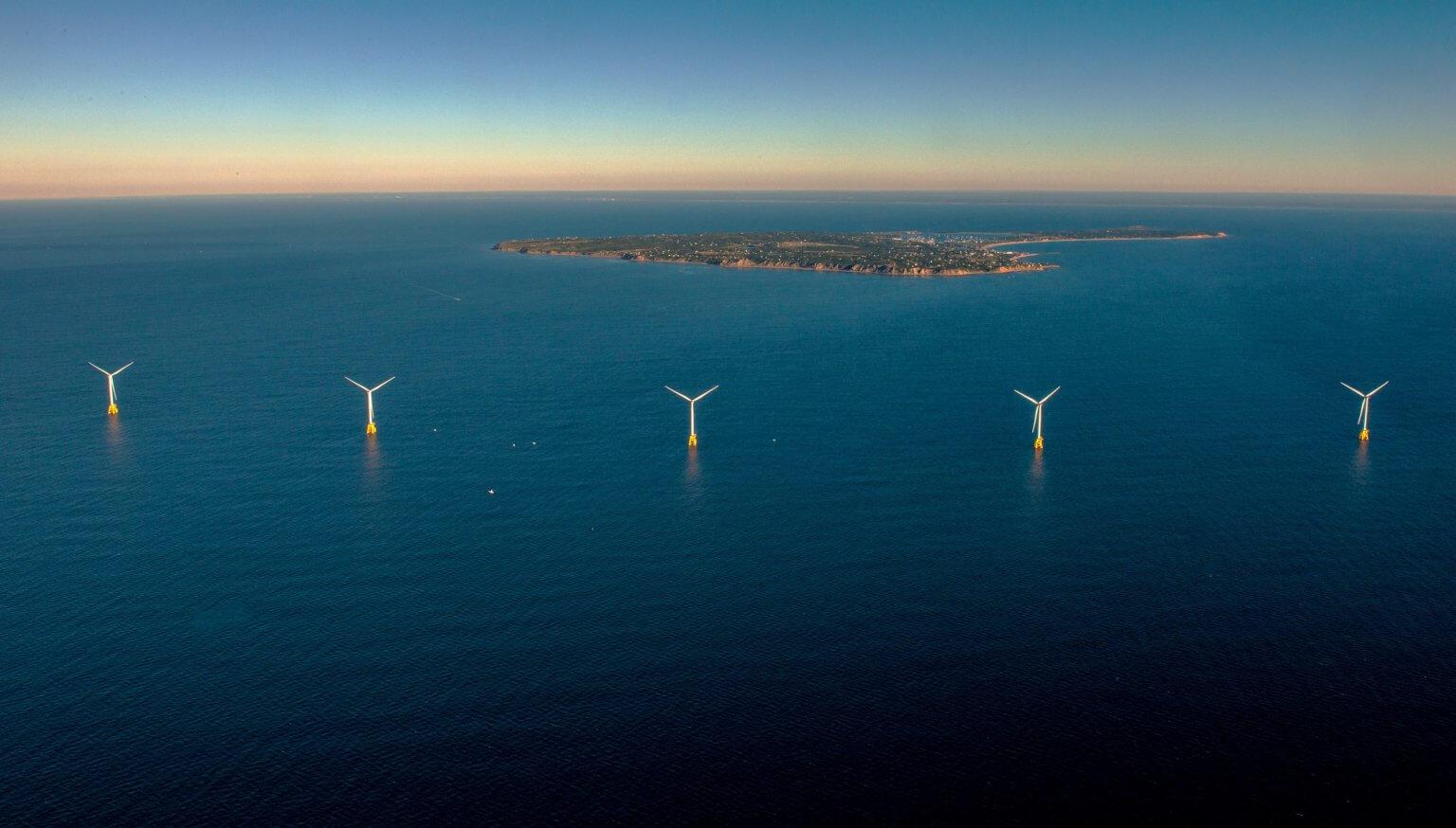Rhode Island and Massachusetts announced the selection of 2,878 megawatts of offshore wind across three projects on Sept. 6, marking the largest selection in the history of New England offshore wind.
The acting commissioner for the Rhode Island Office of Energy Resources, Chris Kearns, described the recent selection as an advancement towards the state’s commitment to 100% renewable energy by 2033, in the press release from the governor’s office.
Rhode Island selected 200 megawatts from the SouthCoast Wind project, with Massachusetts taking the remaining 1,087, as well as 1,591 megawatts from two separate projects, according to the press release from the office of Gov. Dan Mckee.
200 megawatts is a significant dent in the state’s energy goals, according to Professor David Bidwell of the University of Rhode Island Department of Marine Affairs.
“We’re a small state and what I remember from those conversations, when they’re having them, is [that] the only way for Rhode Island to meet those goals is through offshore wind,” Bidwell said.
The governor’s office projected the SouthCoast Wind project will bring renewable energy to an estimated 125,000 Rhode Island homes. This estimate comes with the hurdle of promoting the use of electricity for the average homeowner.
“If you aren’t from here you may not realize how much New England still uses heating oil, which isn’t as true for the rest of the country,” Bidwell said. “The infrastructure in New England is very old, so while a lot of other places such as the west have completely transitioned over to natural gas and electricity, that isn’t the case here.”
Natural gas was still the most popular source of home heating in 2022, for both Rhode Island and the United States, according to the Rhode Island Energy Profile from the U.S. Energy Information Administration. In both Rhode Island and the rest of the U.S. natural gas is the most popular heat source, with just about half of the country and Rhode Island using it. However, the second most popular source of home heating for the U.S. was electricity, at 41.3%, while only 13.6% of Rhode Islanders have electric heating.
Homes in Rhode Island are still being built with oil heating, according to Bidwell. Oil has remained the second most popular source in the state, with a quarter of households still using it to heat their home, in comparison to the rest of the U.S. where only 3.9% opts for oil heating, according to the U.S. Energy Information Administration.
“This idea of moving people away from heating oil, away from gasoline-powered cars, all means you have to supply a reliable source of electricity,” Bidwell said. “In this case they are trying to make that offshore wind.”
With the state’s goals of renewable energy, they also must promote policies that encourage electrification, according to Bidwell. This includes encouraging electric vehicles and heat pumps through rebates and tax incentives. Replacing the need for gas cars and oil for heating creates demand and uses for the energy generated by offshore wind.
The SouthCoast Wind project is a significant increase in Rhode Island’s offshore wind power. In 2023 the state had only 48 megawatts of offshore wind power. A majority of that power came from the Block Island wind farm, which provided 30 megawatts to the Block Island community. This was the first commercial wind farm in the U.S. and was launched in 2016 by the Ørsted offshore wind company, according to the project’s website.
Another 400 megawatts of offshore wind will also come from Revolution Wind, a joint project between Rhode Island and Connecticut, estimated by Ørsted to be completed in 2026. This will bring the state’s total wind power to 648 megawatts, once SouthCoast Wind and Revolution Wind have been completed. It will increase the state’s production of offshore wind by over tenfold in just a decade.
With these new developments will come construction off the New England coast. The five turbines used at the Block Island Wind Farm each produce six megawatts of power. The over 2,000 megawatts to be constructed in the next five years could mean a site 40 times bigger than the Block Island site, depending on the wattage of the individual turbines.
These construction projects have raised concerns for various anti-offshore wind groups across the state, such as the impact they will have on marine life. Professor James Miller, of the URI Department of Ocean Engineering, was a researcher in the acoustic effects of turbine construction on marine life from the Block Island location in 2018.
Once the turbines are in service, there is very little acoustic impact on marine life, according to Miller. This means that noise generated under the swinging blades is almost undetectable underwater to marine life.
“It is no different than a fishing boat passing over,” Miller said.
However, the construction phase can be incredibly loud, according to Miller.
“When you are talking about putting in thousands of turbines that is something to consider,” Miller said.
SouthCoast Wind will bring Rhode Island 200 megawatts of offshore wind power by 2030, according to the press release by the Massachusetts government. Construction on the project is projected to begin in 2025.





